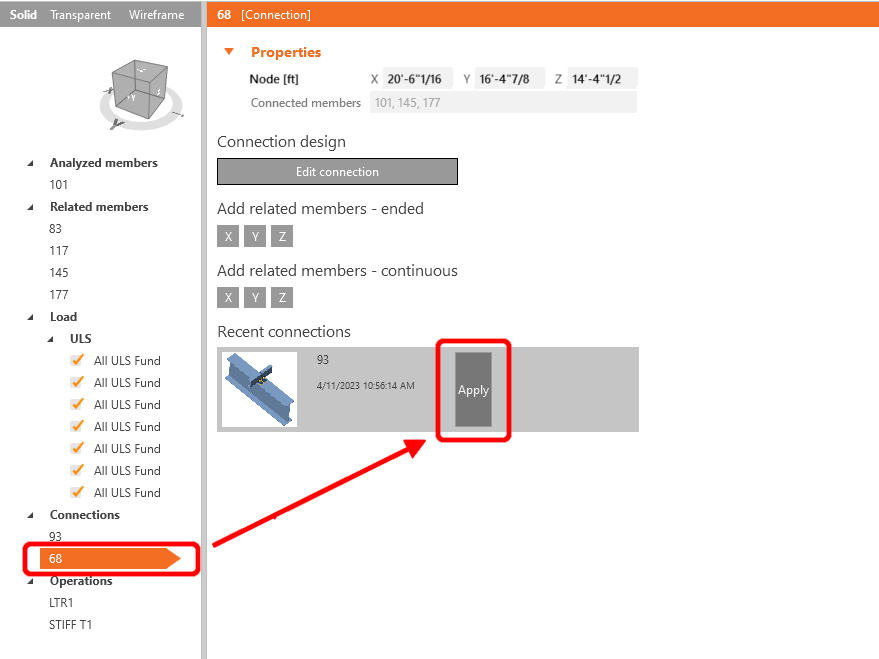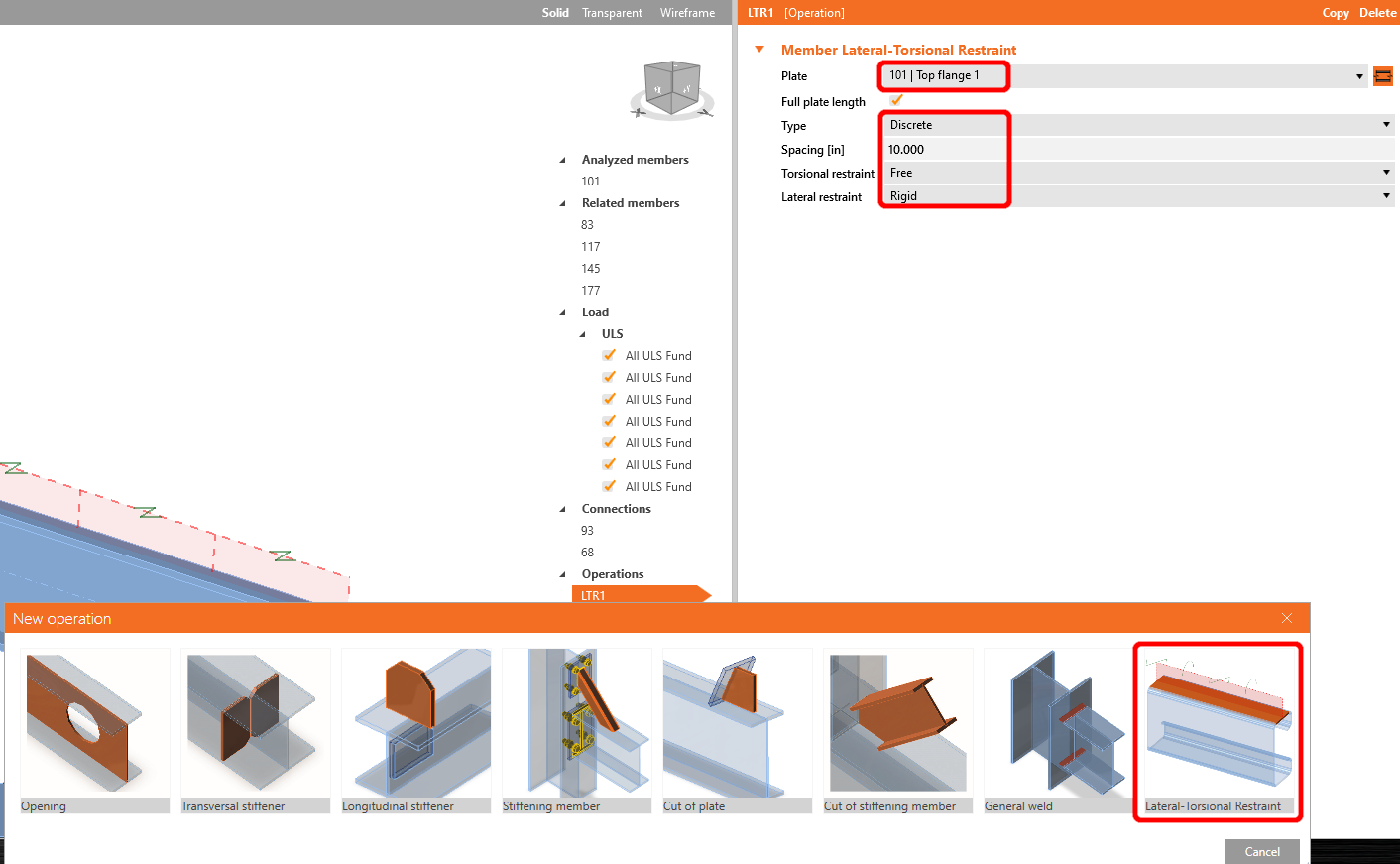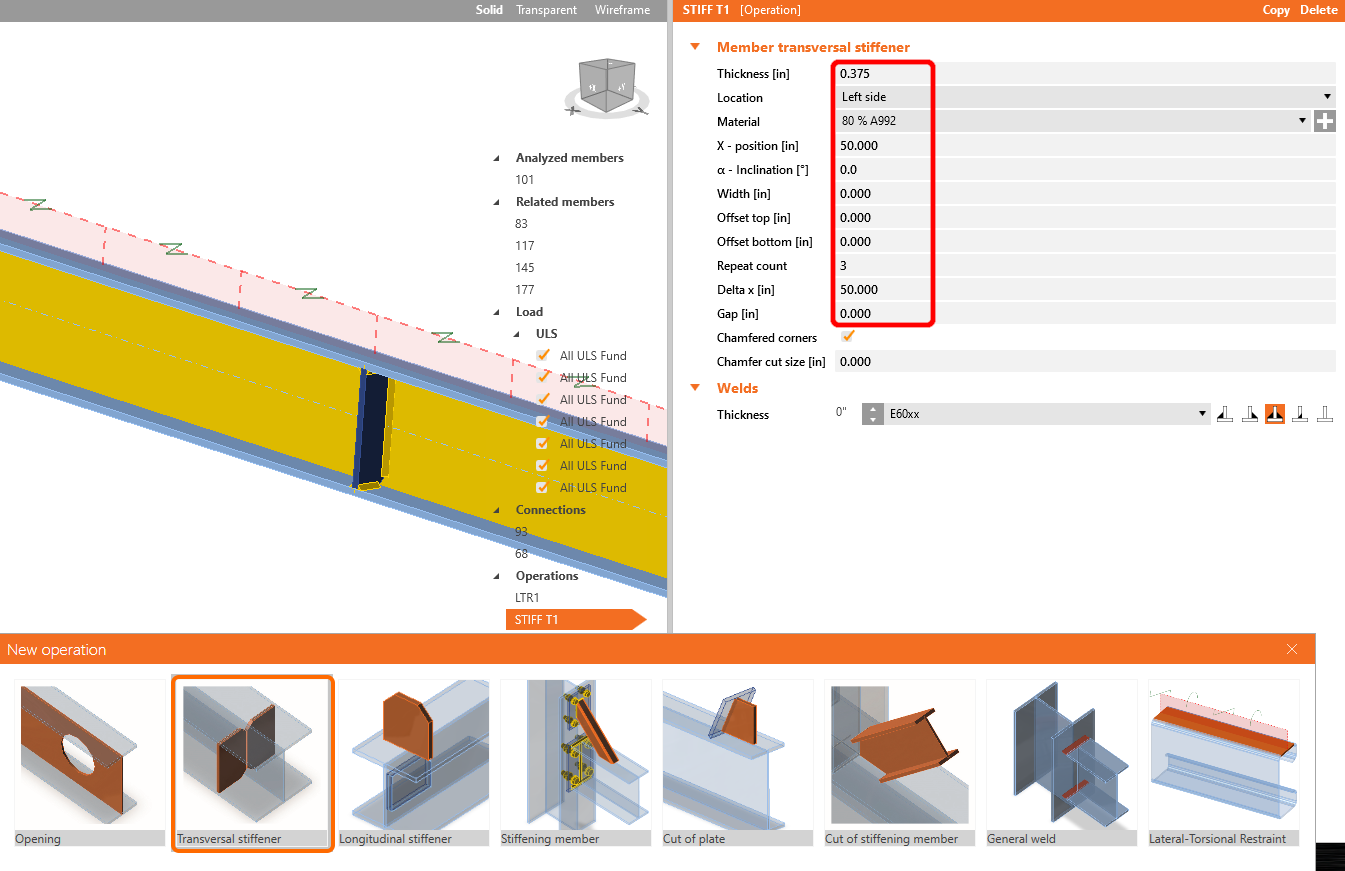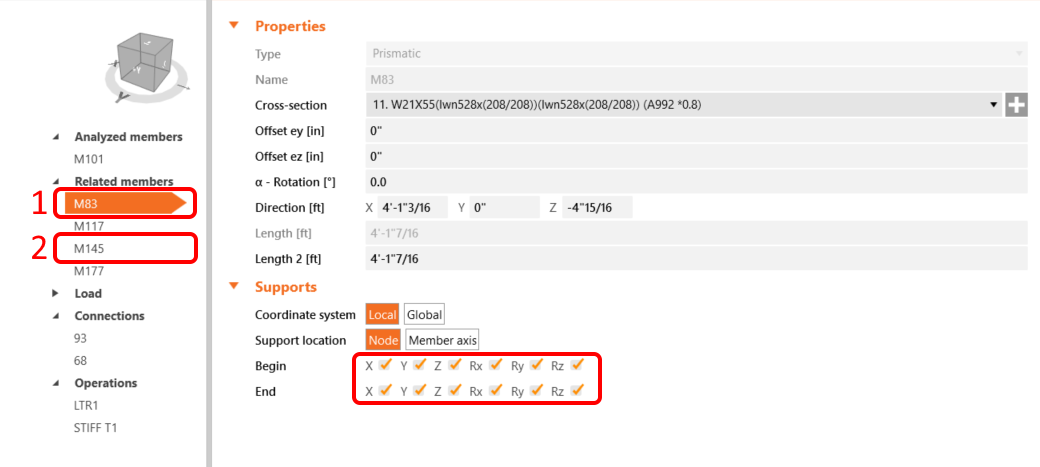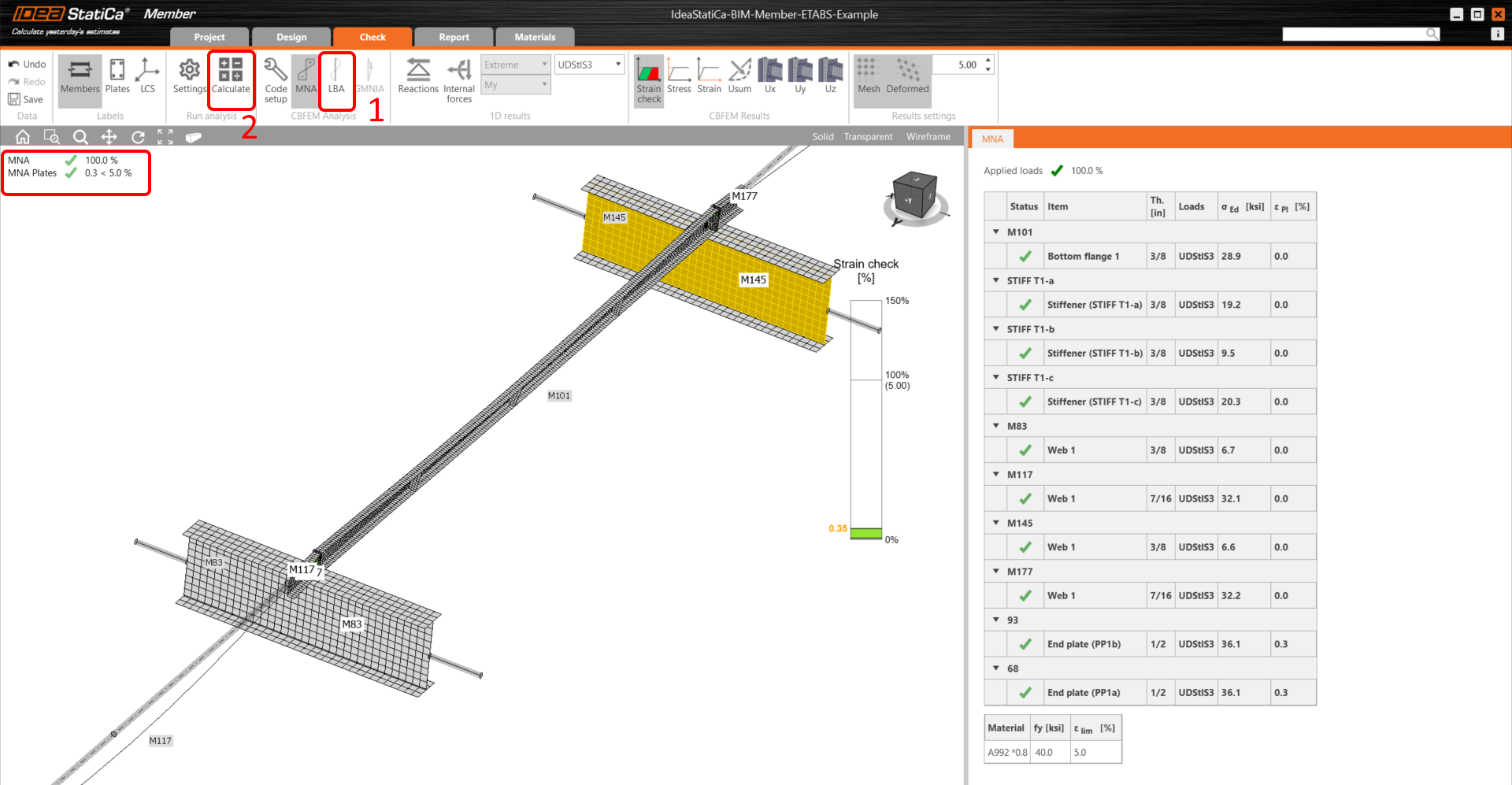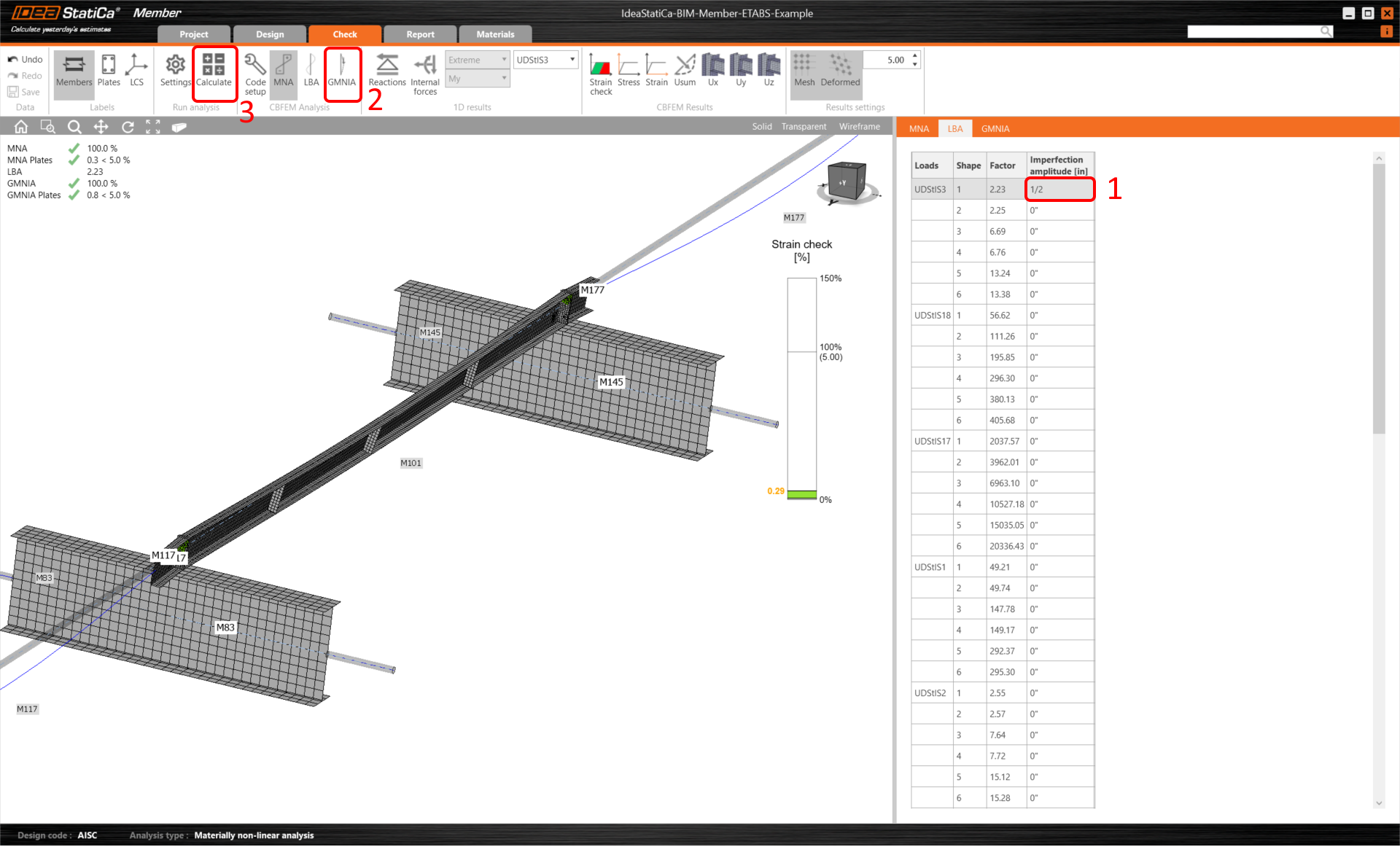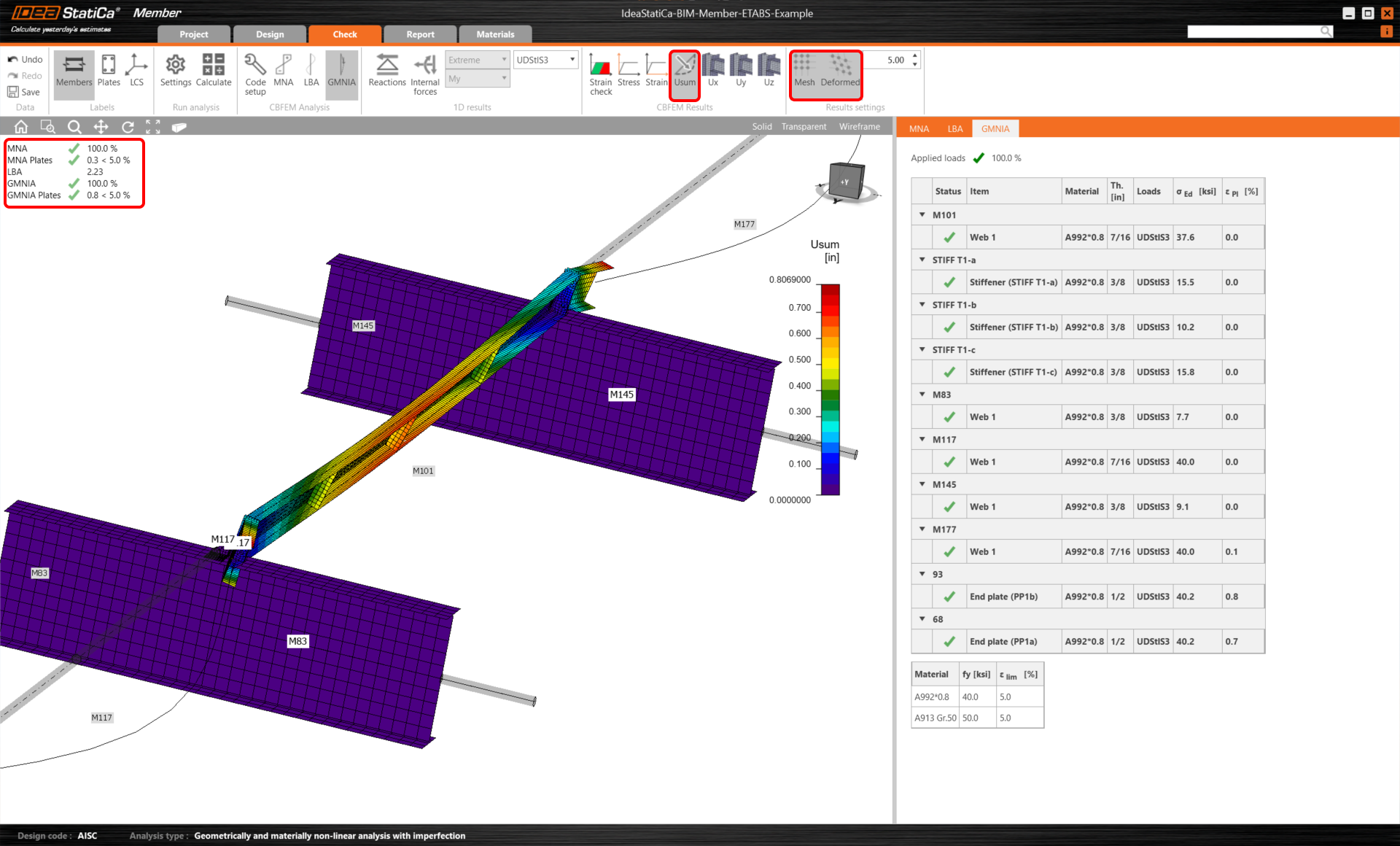As we have similar joints on both sides of the member, you can copy the operations from the first joint to another. Select another joint, then click Apply.
Before starting the analysis, firstly left-click on the U-member, add operation Lateral Restraint, and set up the values according to the picture.
In the next step add operation Stiffeners the same way as in the previous step, and configure the values as shown.
For the realistic behavior of the related members, restrict the supports of 177 and 117 to X, Y, Z, and Rx.
Also restrict the supports of 145 and 83 to X, Y, Z, and Rx, Ry, Rz.
Now the member is ready to be analyzed. Click Calculate, it will run the MNA (materially non-linear) analysis.
After that, you will see the result of the calculation, then select the tab Check and first click on the LBA button, consequently Calculate.
The second analysis is LBA (lateral buckling analysis), where we get a critical factor of less than 15.
This result shows the necessity of running the GMNIA (geometrically and materially non-linear analysis).
Because lateral-torsional buckling is investigated, factor k0 = 0.5 may be used. Amplitude 0.5 • 16,4 • 12 / 200 = 0,492 inches is applied to the first buckling mode.
Click on the imperfection field for the critical buckling factor, and fill the value we calculated above in the row, as shown in the following picture. Thenceforth you can run the last GMNIA (geometrically and materially non-linear) analysis.
Read more about member stability in IDEA StatiCa Member.
Here you can see the satisfied results, which means successful calculation.
You can check the total deformation of the member by clicking on Usum, as shown in the picture below.
We have successfully imported and checked an element of the purlin from ETABS.


